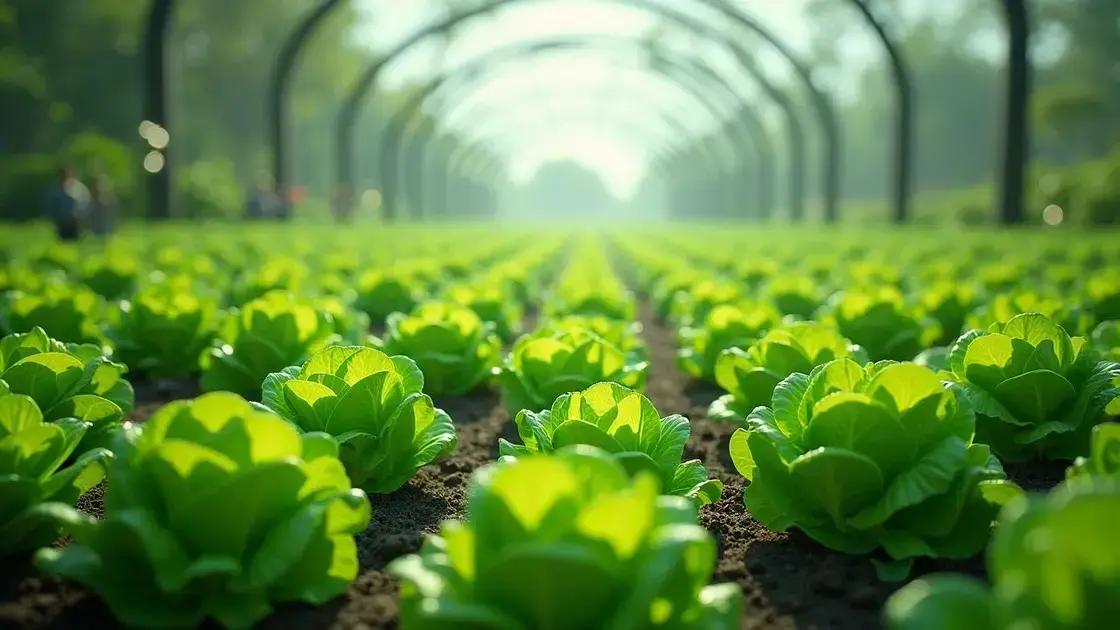How to Care for Lettuce Plants: 5 Expert Tips for Healthy Greens
How to care for lettuce plants can be a daunting question for novice and experienced gardeners alike. However, getting your greens thriving is simpler than it seems. With the right knowledge of their needs, you can grow crisp lettuce that will elevate your salads. Let’s explore effective strategies to cultivate vibrant lettuce plants in your garden.
Table of Contents
ToggleUnderstanding the optimal watering schedule for lettuce plants
Understanding the optimal watering schedule for lettuce plants is crucial for healthy growth. Lettuce thrives in moist soil but can suffer from problems if overwatered or underwatered. It’s vital to strike the right balance to cultivate crisp, tasty greens.
Key Factors in Watering Lettuce
- Soil Type: Lettuce grows best in well-draining, loamy soil. Soil texture affects moisture retention.
- Climate: Adjust your watering schedule based on local weather conditions. Hot and dry climates require more frequent watering.
- Plant Growth Stage: Younger plants need more consistent moisture, while mature lettuce can withstand slightly drier periods.
Recommended Watering Schedule
- Water daily in the early morning hours to prevent evaporation and ensure even distribution.
- Monitor for signs of wilting or drooping leaves, as they signal that the plant needs water.
- Check soil moisture by inserting a finger about an inch into the soil; if it feels dry, it’s time to water.
Common Mistakes to Avoid
- Overwatering: Leads to root rot and poor plant health.
- Ignoring Weather: Adjusting your watering needs based on rainfall is essential.
- Watering at Night: This can promote fungal diseases due to prolonged moisture on the leaves.
Conclusion
Applying these watering techniques will help you establish a robust lettuce garden. For further gardening insights, consider exploring indoor gardening techniques that enhance your skills.
Choosing the right soil requirements for robust growth

Choosing the right soil requirements for robust growth is essential for healthy lettuce plants. The quality of soil directly impacts their development and yield. Lettuce thrives best in rich, well-draining soil that provides essential nutrients for optimal growth.
Essential Soil Characteristics
- Drainage: Good drainage is vital to prevent waterlogging and root rot.
- Texture: A mix of sand, silt, and clay creates ideal soil texture for lettuce.
- pH Level: Lettuce prefers a soil pH between 6.0 and 7.0, slightly acidic to neutral.
Recommended Soil Mixes
- Combine equal parts of compost, peat moss, and perlite for a nutrient-rich and well-aerated mix.
- Add organic fertilizer to enhance nutrient content for healthy growth.
- Test the soil regularly to maintain optimal nutrient levels.
Common Soil Mistakes to Avoid
- Using heavy clay soil that retains too much water.
- Neglecting to amend soil with organic material can deplete nutrients over time.
- Over-fertilizing, which can harm root development and plant health.
Conclusion
By understanding and applying these soil requirements, you can cultivate a thriving lettuce garden. For more gardening advice, consider exploring indoor gardening techniques to enhance your skills.
Essential sunlight exposure and fertilization for lettuce
Essential sunlight exposure and fertilization for lettuce is key to achieving vigorous growth and health. Lettuce plants thrive in well-lit environments, requiring the right balance of sunlight and nutrients to yield crunchy, flavorful leaves.
Sunlight Requirements for Lettuce
- Full Sunlight: Aim for 6-8 hours of direct sunlight each day for optimal growth.
- Partial Shade: In extremely hot climates, providing some afternoon shade can prevent bolting (premature flowering).
- Temperature Considerations: Lettuce prefers cooler temperatures; ideally, daytime highs should be between 60°F and 70°F (15°C to 21°C).
Recommended Fertilization Practices
- Use a balanced fertilizer low in nitrogen for leafy greens. A 5-10-10 NPK (Nitrogen-Phosphorus-Potassium) fertilizer works well.
- Apply fertilizer at planting and every 3-4 weeks during the growing season for steady nutrient supply.
- Consider using organic options like compost or well-rotted manure to enrich soil health.
Signs of Nutrient Deficiency
- Pale Leaves: Indicate a nitrogen deficiency; address by adjusting fertilization.
- Slow Growth: Can signal insufficient nutrients; check soil fertility regularly.
- Tip Burn: Brown leaf edges suggest over-fertilization; monitor application rates carefully.
Conclusion
Providing adequate sunlight and proper fertilization will support the robust growth of your lettuce. To enhance your gardening skills even further, consider exploring indoor gardening techniques that can improve your harvest.
In conclusion
Caring for lettuce plants effectively requires attention to watering schedules, soil choices, sunlight exposure, and proper fertilization. By following the expert tips provided, you can ensure your lettuce thrives and yields delicious greens for your meals. For more insights on enhancing your indoor garden, check out tips on enhancing your indoor garden and take your gardening skills to the next level.

